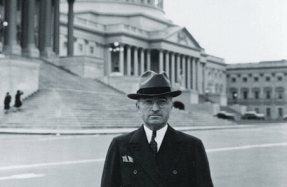
Second Lieutenant Carter Harman was grounded, nursing a cold, and leafing through a Life magazine. It was 1943 and the Brooklyn-born Princeton graduate, an aspiring musician and composer, was serving as a flying instructor at Perrin Air Force Base in Texas while waiting to be shipped overseas. An officer approached the rail-thin Harman and several other young pilots. He asked if there was anyone who weighed less than 150 pounds who would volunteer to fly “heel-e-o-copters.”
“I had heard about them, but I knew nothing about helicopters,” Harman said years later. “I asked around and someone told me that even though you should never volunteer for anything in the Army, it was a good idea to get into every kind of aircraft I could. So, I volunteered.”
Just six months later, Harman was above the jungles of Burma (now Myanmar) flying the first military helicopter rescue mission with an underpowered Sikorsky YR-4B that was prone to stalling in the hot and humid climate. Below him, hiding from the Japanese in the thick jungle canopy, was an American pilot, Ed “Murphy” Hladovcak, who had been shot down while ferrying three wounded and sick British soldiers in a Stinson L-1 Vigilant light aircraft. Enemy patrols passed so close to the four men that, “we could have reached out and touched them,” said Hladovcak, whom everyone called Murphy because his last name was hard to pronounce.
The origins of Harman’s mission can be traced back to the 1943 Quebec Conference of Allied leaders, which adopted a bold plan (eventually called Project 9 or Operation Thursday) to establish airbases deep within enemy territory in Burma to support the British Special Forces of Maj. Gen. Orde Wingate—the Chindits—who were operating behind enemy lines. The Americans would provide the air support comic strip. He had just returned from service in North Africa when he received his assignment. Alison was back in the U.S. after flying P-40s in China when he received his orders.




